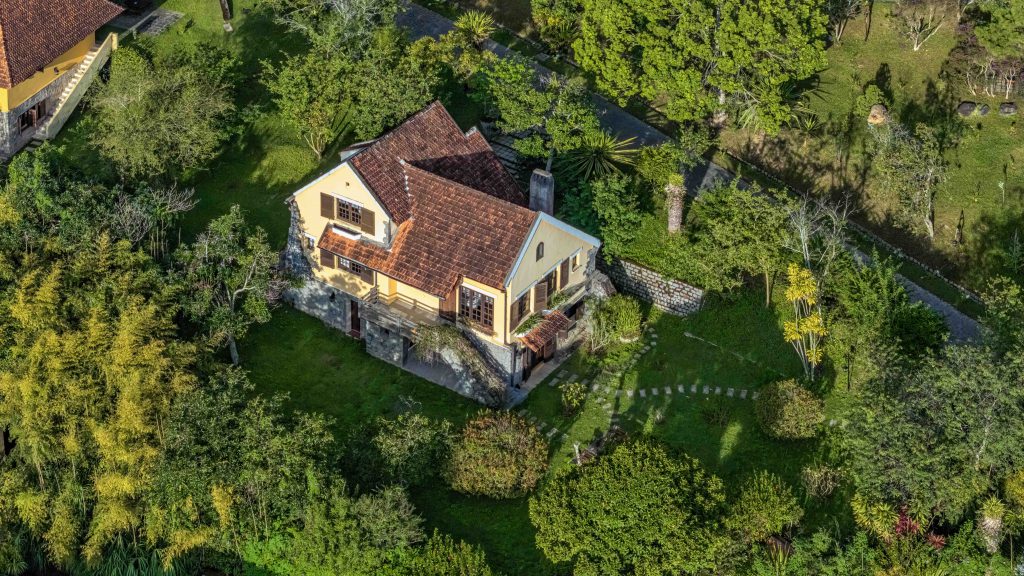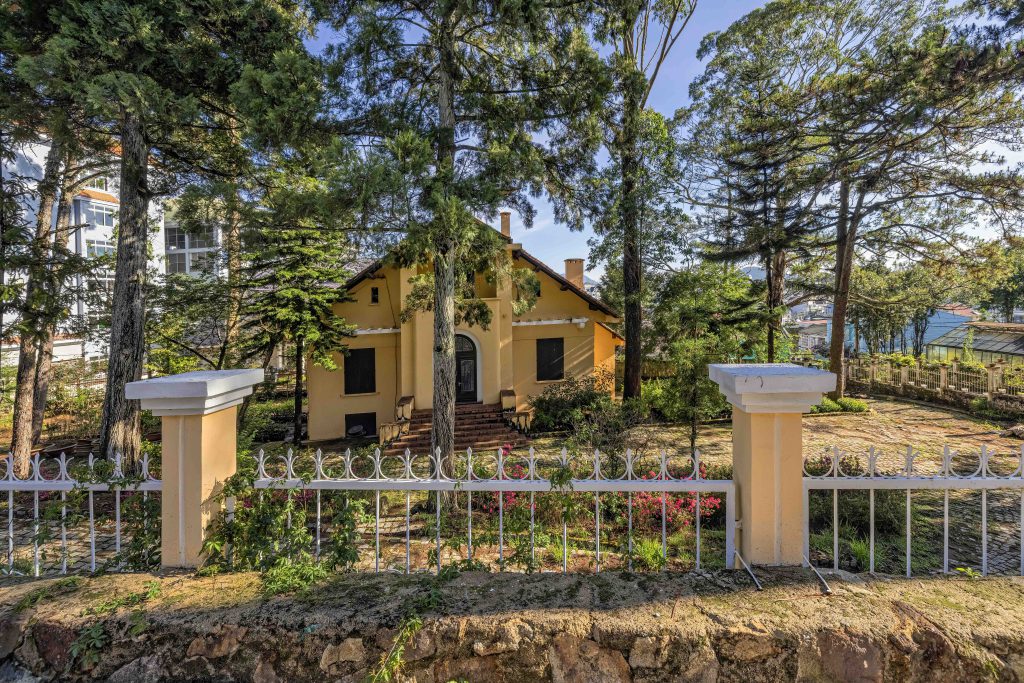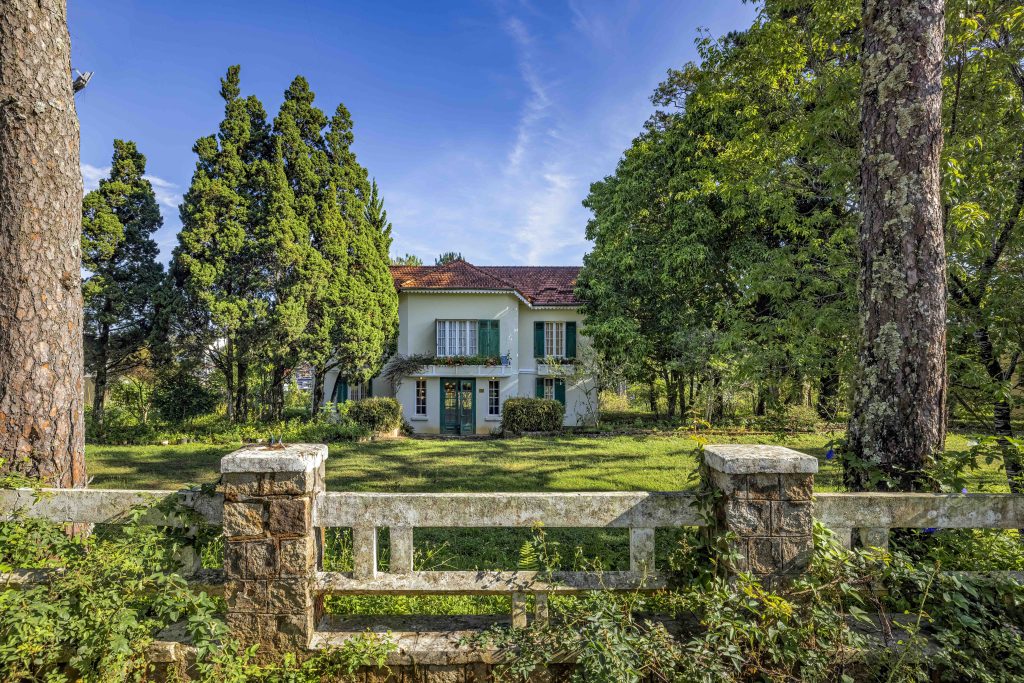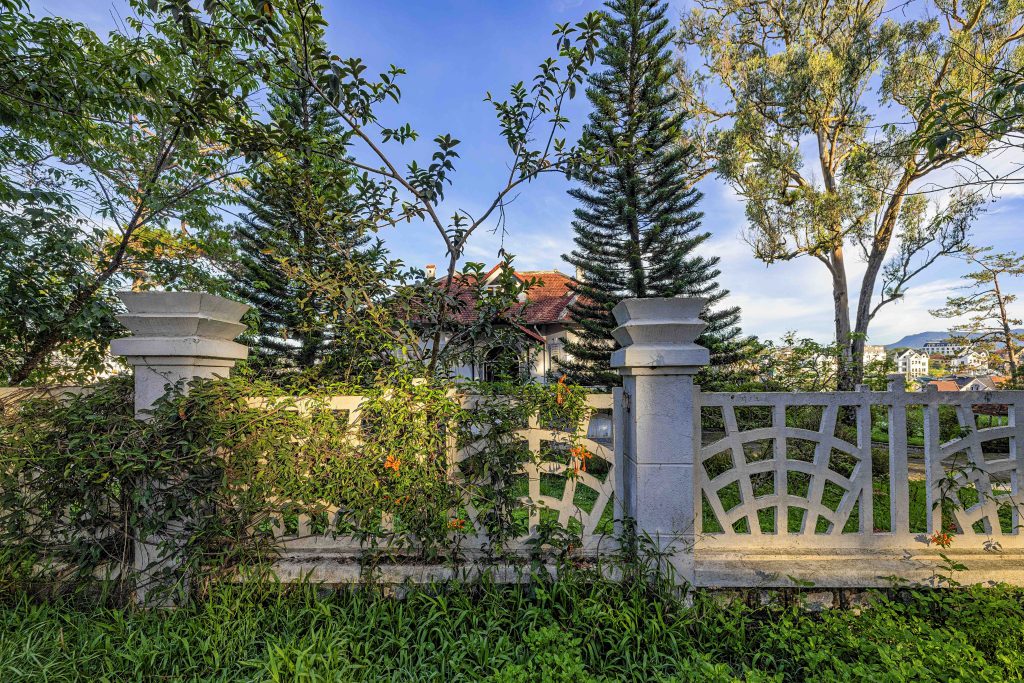Story: Truong Quy
Photos: Quang Ngoc
Dalat has long been renowned for its many villas tucked among pine forests, perched on hillsides, and scattered along quiet streams. Built on a garden-city model, many homes are set within their own gated plots, bordered by a fence and surrounded by ample space, which contributes to the city’s rich architectural diversity. Much of Dalat’s poetic charm, often captured in the image of “lovers strolling hand in hand down a quiet street,” comes from the low fences that offer glimpses of the serene, welcoming homes beyond.

The melody of Dalat’s green pine forests is composed of its historic villas and stately residences. The Lam Dong provincial government has categorized the city’s 166 villas built before 1975 into three groups, with 72 designated for preservation. Many newer villas continue this tradition, set within lush gardens. These gardens, fences, and gates form transitional spaces, once a familiar element of traditional Vietnamese homes, that have become increasingly prized, especially in Dalat.
Charming homes, elegant gates
Tran Hung Dao Street, located south of Xuan Huong Lake, and the circular roads of Co Bac – Co Giang are home to many villas with expansive grounds, particularly the villa cluster at Cadasa Resort. Thanks to low building density, the fences and architecture create a harmonious visual sense of spaciousness and ease. These fences often consist of white-painted concrete slats interwoven above stone bases in grey-yellow hues, creating a rhythmic interplay of solid and void, light and shadow.

Climbing roses, orange Salvia splendens, or Saraca dives vines creep along the geometric pathways, while clusters of colorful hydrangeas peek through the fences, creating a striking contrast between softness and solidity.
Rather than following the ornate wrought-iron gates typical of early 20th-century neoclassical architecture, most villas in Dalat dating from the mid-20th century onward reflect a modernist aesthetic. These gates are often minimalist, sometimes just two modest stone pillars, assembled with staggered masonry to form square columns, featuring sharply defined joints. The gate itself might consist of loosely latticed iron slats, either ajar or fully open, offering a view of a stone-paved courtyard and inviting one in. Against the grey-white concrete and stone, bursts of green foliage and vivid flowers lend a graceful vibrancy. Some gates are distinguished by raised letter signage, like Villa Merionnet at 44 Hung Vuong, serving not as a barrier but as an expression of the owner’s aesthetic taste. The arched gateway beneath the angular lines echoes the sharply slanted roof of the villa nestled inside. The two gate panels also harmonize with crisscrossed iron bars, gently delineating rather than completely enclosing the façade. Today, traces of old letterboxes can still be found near the entrance, reminders of a nearly forgotten practice of postal correspondence.

Grand homes, humble fences
Although Dalat was once envisioned as the “summer capital”, a retreat for the Governor-General of Indochina and French officials, and a potential seat of power, its mansions and public buildings were never concealed behind towering gates or imposing walls. Instead, they are framed by modest fences and unassuming gates. The Pasteur Institute on Le Hong Phong Street, for instance, features gate posts combining octagonal and quadrangular shapes with vertical fluting, in harmony with the Art Deco architecture of the main building. The result is a refined expression that balances clarity and restrained ornamentation. Some institutions that required a more secure appearance opted for natural fencing, such as rows of agave plants, most notably seen along the entrance to the Central Highlands Scientific Research Institute.

Landmarks such as Bao Dai’s Summer Palace, the Langbiang Palace Hotel, the Pedagogical College, and Dalat University all feature surrounding gardens that create scenic backdrops, allowing these structures to stand out amid the pine-covered landscape. Their open fencing and mostly wrought-iron gates, even for government offices, align with the broader architectural ethos of the city’s villas, contributing to an overall spirit of humanistic urban design. From the fence line, one can glimpse stone pathways leading to bell towers, evoking a sense of quiet reverence. Gardens peek from behind gates, offering a delicate reminder of an era filled with romance and dreams.
These airy fences are often cloaked in verdant foliage and vivid blossoms, allowing the streets’ greenery, forested slopes, and villa gardens to flow seamlessly into one another. Nearby lakes and streams join this picturesque ensemble, making each home an integral part of the greater landscape. They serve as a greeting, a prelude to the romantic symphony composed by the hundreds of villas nestled among the whispering pines.










